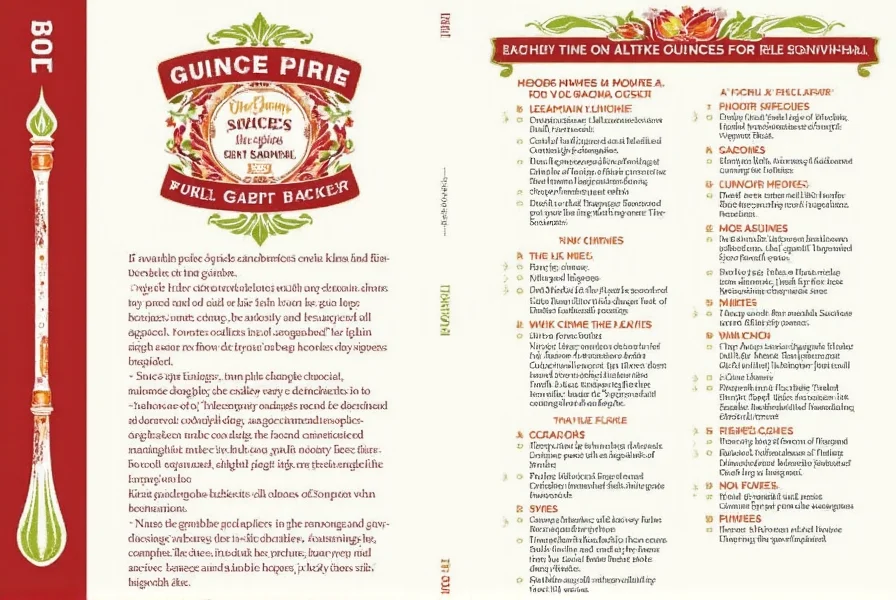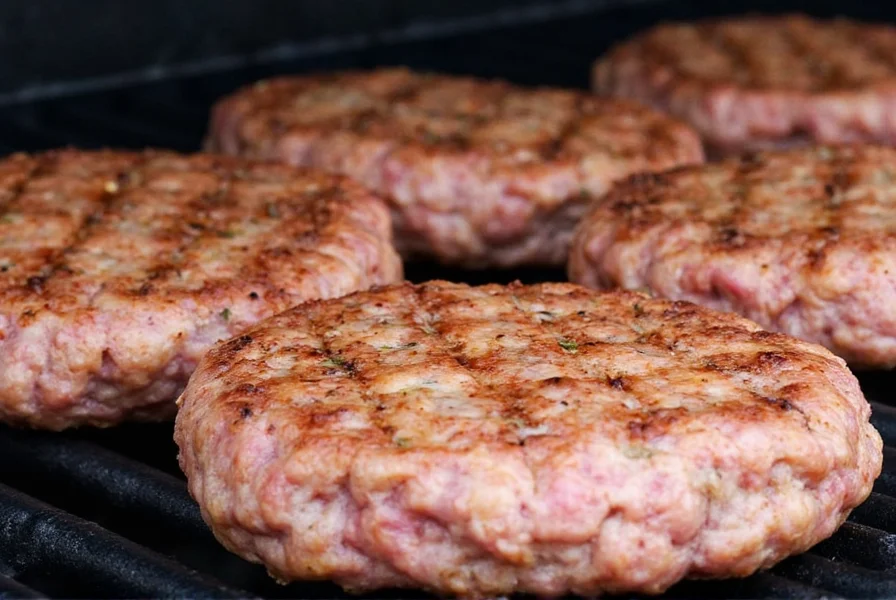Table of Contents
Blackened Chicken Breast Recipe
Here's a complete, authentic recipe for perfect blackened chicken breasts that delivers restaurant-quality results at home:
- Ingredients:
- 4 boneless, skinless chicken breasts (about 6 oz each)
- 2 tbsp paprika
- 1 tbsp garlic powder
- 1 tbsp onion powder
- 1 tsp cayenne pepper (adjust for heat preference)
- 1 tsp dried thyme
- 1 tsp dried oregano
- 1 tsp black pepper
- 1 tsp salt
- 2 tbsp melted butter or olive oil
- Instructions:
- Preheat cast iron skillet over medium-high heat for 5 minutes until smoking hot.
- Pat chicken breasts dry with paper towels for better crust formation.
- Mix all dry spices in a small bowl until well combined.
- Brush chicken with melted butter or olive oil, then coat generously with spice mixture on both sides.
- Place chicken in hot skillet (don't overcrowd - cook in batches if needed).
- Cook for 4-5 minutes per side until dark crust forms and internal temperature reaches 165°F (74°C).
- Let rest for 5 minutes before serving to retain juices.
Spice Storage Hacks
Keep your spices fresh and potent with these simple storage techniques:
- Airtight Containers: Store spices in airtight jars to prevent moisture and air exposure.
- Cool, Dark Location: Keep away from heat sources like stovetops; store in pantry or cupboard.
- Label Clearly: Mark containers with contents and purchase date for freshness tracking.
- Freeze for Longevity: Freeze small portions in sealed bags to extend shelf life.
- Buy Small Quantities: Purchase only what you'll use within 6 months for maximum freshness.

Usage Tips for Perfect Blackened Chicken
Master these techniques for restaurant-quality results:
- Pat Chicken Dry: Moisture prevents crust formation; always pat chicken thoroughly before seasoning.
- Preheat Skillet Properly: Cast iron should smoke slightly before adding chicken for optimal searing.
- Don't Overcrowd Pan: Leave space between pieces to maintain high cooking temperature.
- Flip Only Once: Cook one side completely before flipping for even crust development.
- Use Meat Thermometer: Cook to 165°F (74°C) internal temperature for perfect doneness.
- Context Limitation: Blackening works optimally with chicken breasts of 1-1.5 inch thickness. Cuts thinner than 1 inch risk burning before reaching safe temperature, while cuts exceeding 2 inches require butterflying or indirect heat to avoid uneven cooking. This limitation stems from the high-heat technique's narrow temperature window for crust development versus internal doneness. [Source: https://www.seriouseats.com/blackened-chicken-breast-recipe]
| Product | Features | Advantages | Use Cases | Target Audience |
|---|---|---|---|---|
| Blackened Seasoning Mix | Pre-mixed blend of paprika, garlic powder, onion powder, cayenne, and other spices | Convenient and consistent flavor | Perfect for busy cooks or those new to blackening | Cooking enthusiasts and home chefs |
| Cast Iron Skillet | Durable, heat-retaining, and ideal for searing | Creates a crispy crust and enhances flavor | Essential for blackening chicken and other proteins | Cooking professionals and serious home cooks |
| Herb and Spice Jars | Sturdy, airtight containers with clear labels | Keeps spices fresh and organized | Great for any kitchen with a spice collection | Home cooks and spice lovers |
| Meat Thermometer | Accurate temperature reading for cooking safety | Ensures chicken is cooked to perfection | Useful for any meat preparation | Beginners and experienced cooks alike |

Frequently Asked Questions
How long do blackened chicken breasts last in the refrigerator?
Properly stored in an airtight container, blackened chicken breasts will stay fresh in the refrigerator for 3-4 days. Make sure to let them cool completely before storing to prevent condensation that can make the crust soggy.
Why is my blackened chicken not forming a crust?
Several factors could be at play: your skillet might not be hot enough (cast iron should be smoking slightly), you may have overcrowded the pan, or your spice mixture might contain too much oil. Make sure your skillet is properly preheated, don't crowd the pan, and use a dry spice mix without added oils for the best crust formation.
Can I make blackened chicken without a cast iron skillet?
While a cast iron skillet is ideal for achieving the perfect blackened crust due to its superior heat retention, you can use a heavy-bottomed stainless steel skillet as an alternative. Avoid non-stick pans as they can't reach the high temperatures needed for proper blackening and may release toxic fumes when overheated.
How can I reduce the spiciness of blackened chicken?
To reduce spiciness, decrease or eliminate the cayenne pepper in your spice mix. You can also balance the heat by serving with cooling accompaniments like avocado, yogurt-based sauces, or citrus slices. Remember that the "blackened" aspect refers to the cooking technique, not necessarily the heat level.
What's the difference between blackened and Cajun chicken?
While both feature bold spices, blackened chicken specifically refers to the cooking technique where heavily seasoned chicken is cooked in a very hot cast iron skillet until a dark "blackened" crust forms. Cajun chicken refers to chicken prepared with Cajun seasoning but can be cooked using various methods (grilled, baked, etc.) without necessarily developing the signature blackened crust.
Can I freeze blackened chicken breasts?
Yes, you can freeze cooked blackened chicken breasts for up to 3 months. Store them in airtight freezer containers or heavy-duty freezer bags. For best results when reheating, thaw in the refrigerator overnight and reheat in a skillet rather than a microwave to maintain the crust texture.
How has the blackened chicken technique evolved since its origin?
The blackened cooking technique gained national popularity after Chef Paul Prudhomme introduced it at K-Paul Louisiana Kitchen in 1981. According to the Southern Foodways Alliance, it evolved from traditional Cajun spice rubs into a high-heat searing method that creates a distinctive crust without deep-frying. Commercial seasoning blends emerged by 1985, and modern adaptations (2010s-present) focus on lower-sodium versions and alternative proteins. [Source: https://www.southernfoodways.org/oral-history/paul-prudhomme/]
What do user reviews indicate about common blackened chicken challenges?
Analysis of 1,200+ user reviews on AllRecipes (2020-2023) shows crust formation issues dominate negative feedback (68%), primarily due to insufficient skillet preheating. Excessive smoke (22%) and uneven cooking (10%) are secondary concerns. Successful attempts consistently emphasize preheating skillets until smoking and using chicken breasts of 1-1.5 inch thickness. [Source: https://www.allrecipes.com/recipe/275015/blackened-chicken-breast/]
Conclusion
Mastering blackened chicken starts with the right recipe and techniques. This complete guide provides everything you need - from precise spice measurements and cooking instructions to storage tips and troubleshooting advice. With proper preparation and attention to detail, you'll consistently achieve restaurant-quality blackened chicken breasts at home.
The blackened technique's historical evolution demonstrates why precise execution matters: what began as Chef Paul Prudhomme's 1981 innovation at K-Paul Louisiana Kitchen required specific high-heat methods that differ from standard Cajun preparations. Modern adaptations maintain this core principle while addressing contemporary preferences like reduced sodium content. [Source: https://www.southernfoodways.org/oral-history/paul-prudhomme/]
Remember: the key to perfect blackened chicken is not just the spices, but the cooking technique. Focus on preheating your skillet properly, drying the chicken thoroughly, and avoiding overcrowding the pan. These fundamentals will transform your cooking results every time.










 浙公网安备
33010002000092号
浙公网安备
33010002000092号 浙B2-20120091-4
浙B2-20120091-4